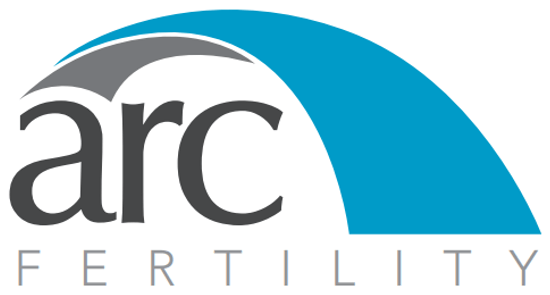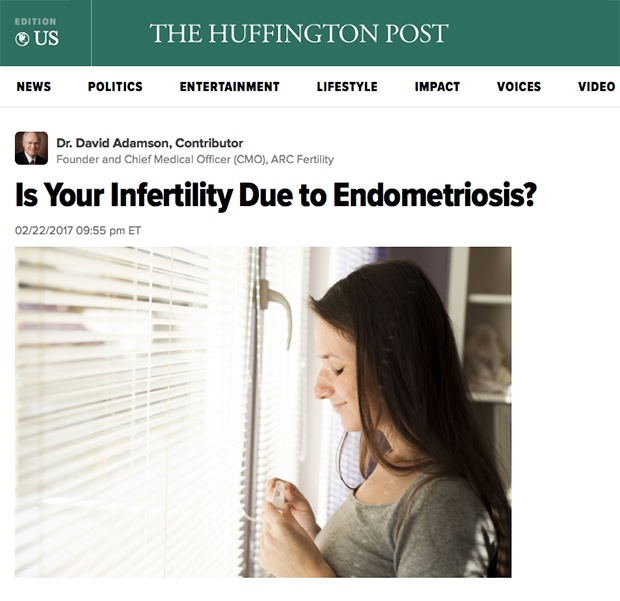You’ve probably heard of endometriosis since more than 7 million American women – and 176 million women worldwide – have the condition. About 25-50% of women dealing with infertility have endometriosis, according to the American Society for Reproductive Medicine (ASRM). All stages of endometriosis can potentially contribute to infertility, probably for different reasons in different women, depending on the amount of endometriosis and other individual health characteristics.
Despite these statistics, there is some good news. While it’s not yet known why some women develop endometriosis and others do not, we’ve learned more about techniques to improve fertility. Women with moderate or severe endometriosis often need surgery or assisted reproductive technologies in order to become pregnant.
Endometriosis does run in families and other factors known to influence the risk include starting menstruation at an early age, a short cycle length (less than 27 days) and smoking status. We’ve also learned the severity and course of endometriosis is highly variable and unpredictable.
The condition develops when menstrual bleeding goes awry. Normally, each month the uterine lining, or endometrium, prepares for the potential implantation of an egg. When that doesn’t occur, the lining sheds and exits the body through the vagina during your monthly period.
It is generally believed the most common way the condition occurs is that endometrial tissue and blood passes back through the fallopian tubes into the pelvis and grows and attaches itself to other organs. Then, each month, hormones stimulate the tissue to grow, with no way for the shed tissue or blood to exit the body. This tissue causes inflammatory and other responses inside the pelvis and abdomen. The tissue may be as small as a fleck, a nodule or develop into cysts that vary in size from a pea to a grapefruit.
The primary reason infertility often results from endometriosis is due to internal scarring or adhesions that prevent the release of eggs, block sperm from entering the fallopian tubes and affect the ability of the tubes to pick up eggs during ovulation. Inflammation is also common and can create an environment that affects and even harms the sperm and eggs and possibly development of the embryo.
Symptoms may include pelvic or abdominal pain during the menstrual cycle or during sex or there may be no symptoms at all. The only way to accurately diagnose endometriosis is through an outpatient operation that uses a laparoscope – a thin telescope with a tiny camera that can identify adhesions and other problems. If you are trying to get pregnant, the earlier the diagnosis and treatment, the better, as the condition can grow worse over time.
A diagnosis of endometriosis classifies the condition into one of four categories: Stage 1, minimal; Stage 2, mild; Stage 3, moderate or Stage 4, severe. The stage is not related to symptoms – you can have a mild diagnosis but major symptoms including pelvic pain, infertility and trouble going to the bathroom, all affecting your quality of life.
According to ASRM, the diagnostic score you receive and whether the endometriosis is treated surgically does make a difference when trying to get pregnant. The Endometriosis Fertility Index predicts your chances of pregnancy after you have had surgery.
Without treatment, it is very difficult for couples to get pregnant. Infertility patients with untreated mild endometriosis get pregnant on their own at a rate of 2% to 4.5% per month, compared to unaffected couples that get pregnant at a 15% to 20% monthly rate. Patients with moderate and severe endometriosis have monthly pregnancy rates of less than 2%.
Pregnancy results are different when there is treatment: in the largest study so far, 29% of women with mild or minimal endometriosis were able to get pregnant within nine months. This contrasts with only 17% of women who were diagnosed during a laparoscopy but not treated. And, the best chance to become pregnant is in the first year or so following treatment.
Assisted reproductive techniques such as in vitro fertilization with embryo transfer (IVF ET) have been most effective treating women with all stages of endometriosis. Treatment of moderate and severe endometriosis by laparoscopy also increases pregnancy rates for women where no other causes of infertility have been found. Further, a study published last year with data from 22,000 women reported that women with a diagnosis of endometriosis who undergo IVF are equally likely to have a successful pregnancy as those undergoing fertility treatment for other reasons.
Trying to get pregnant and deliver a healthy baby when you have endometriosis does create special challenges and requires careful planning with your physician.
Any treatment plan for infertility will consider your age, duration of infertility, pelvic pain and the stage of your endometriosis to maximize your chance of success.
Getting pregnant can actually help improve the condition, including pain symptoms. Due to the genetic basis of endometriosis and other issues, most experts believe it is not possible to completely resolve the condition. However, many women have very few or no symptoms after treatment, especially if they also have a pregnancy.
Dealing with endometriosis – including the impact on your fertility – can be incredibly challenging. Joining a support group can help you cope with your diagnosis. RESOLVE, The Infertility Association has resources to find the right group for you.
As always, you should discuss your unique case with your doctor who can explain what your specific diagnosis means and which fertility treatments may offer the best chance for having a healthy baby…or two!


